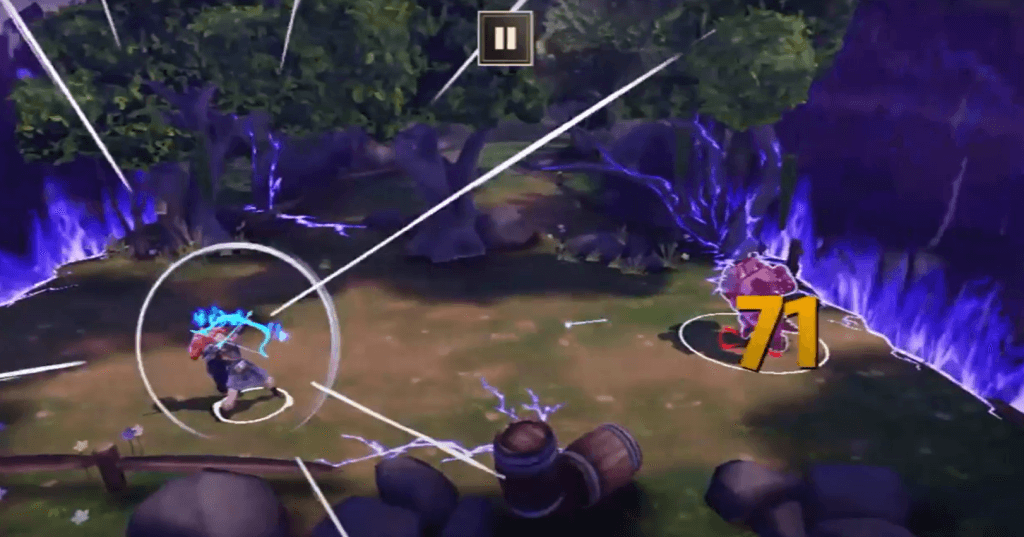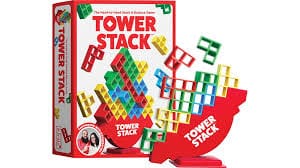Tower Stack Classic
Tower Stack Classic, a captivating stacking game, challenges players to build towering structures with precision, balance, and strategy. Known for its simplicity and addictive gameplay, this game has become a staple in both digital and physical formats, appealing to players of all ages. Whether played on a mobile device, browser, or as a tabletop version, Tower Stack Classic combines the thrill of defying gravity with the satisfaction of mastering a challenging task. This article explores the game’s origins, mechanics, appeal, educational benefits, and cultural significance, highlighting why it remains a beloved classic.
Origins and Evolution
The concept of stacking games dates back centuries, with physical games like Jenga (1983) popularizing the idea of building precarious towers. Tower Stack Classic, in its modern form, emerged in the digital gaming era, particularly with the rise of mobile and browser-based games in the early 2000s. Inspired by physics-based puzzles and arcade games, developers created digital versions that replicated the tactile joy of stacking while adding vibrant visuals and dynamic challenges. Titles like Stack by Ketchapp (2016) and Tower Stack on platforms like CrazyGames brought the game to a global audience, leveraging mobile gaming trends.
The game’s evolution reflects advancements in game design. Early versions were simple, with basic 2D blocks, but modern iterations incorporate 3D graphics, leaderboards, and themed environments, such as neon-lit towers or minimalist designs. Physical adaptations, like wooden or plastic stacking sets, also exist, often used in classrooms or family settings. The game’s accessibility—available on Android, iOS, and web browsers—has cemented its status as a cross-platform favorite, with no-download HTML5 versions broadening its reach.
Gameplay Mechanics
Tower Stack Classic is a physics-based game where players stack blocks, shapes, or objects to build the tallest possible tower without it collapsing. The core mechanic involves placing each piece precisely atop the previous one, accounting for gravity and balance. In digital versions, players typically tap or click to drop blocks, which may sway, rotate, or move across a platform. The challenge intensifies as the tower grows, requiring pinpoint timing and hand-eye coordination.
A typical game session begins with a flat base, onto which players stack rectangular blocks, cylinders, or irregular shapes, depending on the version. The blocks often move side-to-side or oscillate, demanding perfect timing to align them. Misplacement causes the tower to wobble, and a collapse ends the game, with the score based on the tower’s height. Variations introduce twists, such as shrinking blocks, time limits, or environmental hazards like wind, adding complexity to the stacking challenge.
Some versions incorporate power-ups, like stabilizers or extra lives, while others feature multiplayer modes or leaderboards for competitive play. Physical versions, like tabletop stacking games, replace digital controls with manual placement, emphasizing fine motor skills. The simplicity of the rules—stack without toppling—makes Tower Stack Classic accessible, yet its increasing difficulty ensures long-term engagement.
Why It Captivates
Tower Stack Classic thrives on its universal appeal. The game’s intuitive mechanics require no prior knowledge, making it ideal for children, adults, and seniors. The satisfaction of watching a tower grow, coupled with the tension of avoiding a collapse, creates an addictive loop. Each successful stack feels rewarding, while a toppled tower spurs players to try again, fostering perseverance.
The game’s visual feedback—vibrant colors, smooth animations, and satisfying sound effects—enhances immersion. Mobile titles like Stack use minimalist designs with pastel or neon palettes, appealing to modern aesthetics. The portability of digital versions, playable on smartphones or tablets, makes it perfect for quick sessions during commutes or breaks. Physical versions, often used in social settings, add a tactile dimension, with players cheering or gasping as towers teeter.
Replayability is a key strength. Randomized block movements or sizes ensure no two games are identical, while high-score systems encourage players to beat their personal bests or compete globally. The game’s scalability—easy at first, fiendishly hard at greater heights—keeps players engaged across skill levels.
Educational and Cognitive Benefits
Tower Stack Classic offers significant cognitive benefits, particularly for young players. The game hones hand-eye coordination as players time their drops or placements. It also develops spatial awareness, as players must judge alignment and balance in real-time. Research suggests that physics-based games improve mental rotation skills, which are valuable in STEM fields like engineering or architecture.
For children, Tower Stack Classic fosters fine motor skills, especially in physical versions where players carefully place pieces. The game encourages problem-solving, as players learn from failed attempts and adjust their strategies. It also teaches patience and focus, as hasty moves lead to collapses. In classrooms, teachers use stacking games to introduce concepts like gravity, balance, or even basic physics, making learning interactive and fun.
The game’s low-pressure environment—no harsh penalties beyond restarting—makes it a stress-relieving activity. For adults, it can serve as a mindfulness exercise, requiring focus on the present moment. Parents value its screen-free potential in physical formats, offering a break from digital devices while still engaging young minds.
Cultural Impact and Community
Tower Stack Classic has carved a niche in gaming culture, particularly within the casual gaming community. Mobile versions like Stack have garnered millions of downloads, with players sharing high scores on platforms like Reddit or X. Online forums discuss strategies, such as timing techniques or optimal tapping rhythms, fostering a sense of community. The game’s presence on sites like CrazyGames and Poki, offering no-download play, has made it a go-to for instant entertainment.
Physical stacking games are popular in social settings, from family game nights to team-building exercises. Schools and libraries use them to promote dexterity and collaboration, with some hosting stacking competitions. The game’s simplicity has inspired fan-made variants, including custom block sets or digital mods with new themes, reflecting its creative influence.
The genre’s cultural footprint extends to its influence on other physics-based games. Titles like Tetris or Jenga-inspired* apps owe a debt to the stacking mechanic, while Tower Stack Classic itself draws from arcade traditions. Its timeless appeal lies in its ability to evoke nostalgia while feeling fresh, connecting players across generations.

Modern Relevance
The rise of mobile gaming has propelled Tower Stack Classic to new heights, with developers like Ketchapp leading the charge. Posts on X highlight ongoing interest, with players praising the game’s addictive simplicity or suggesting new features like augmented reality modes. The game’s adaptability—playable solo or competitively, digitally or physically—ensures its relevance in a fast-evolving gaming landscape.
Conclusion
Tower Stack Classic is a testament to the power of simple, well-executed game design. Its blend of precision, patience, and physics-based fun captivates players, from kids learning motor skills to adults seeking a quick challenge. Whether stacking virtual blocks on a smartphone or wooden pieces at a family gathering, the game delivers universal joy. As it continues to inspire new iterations and communities, Tower Stack Classihttps://apksure.net/c stands tall as a timeless classic, proving that the simplest ideas can build the most enduring towers.
